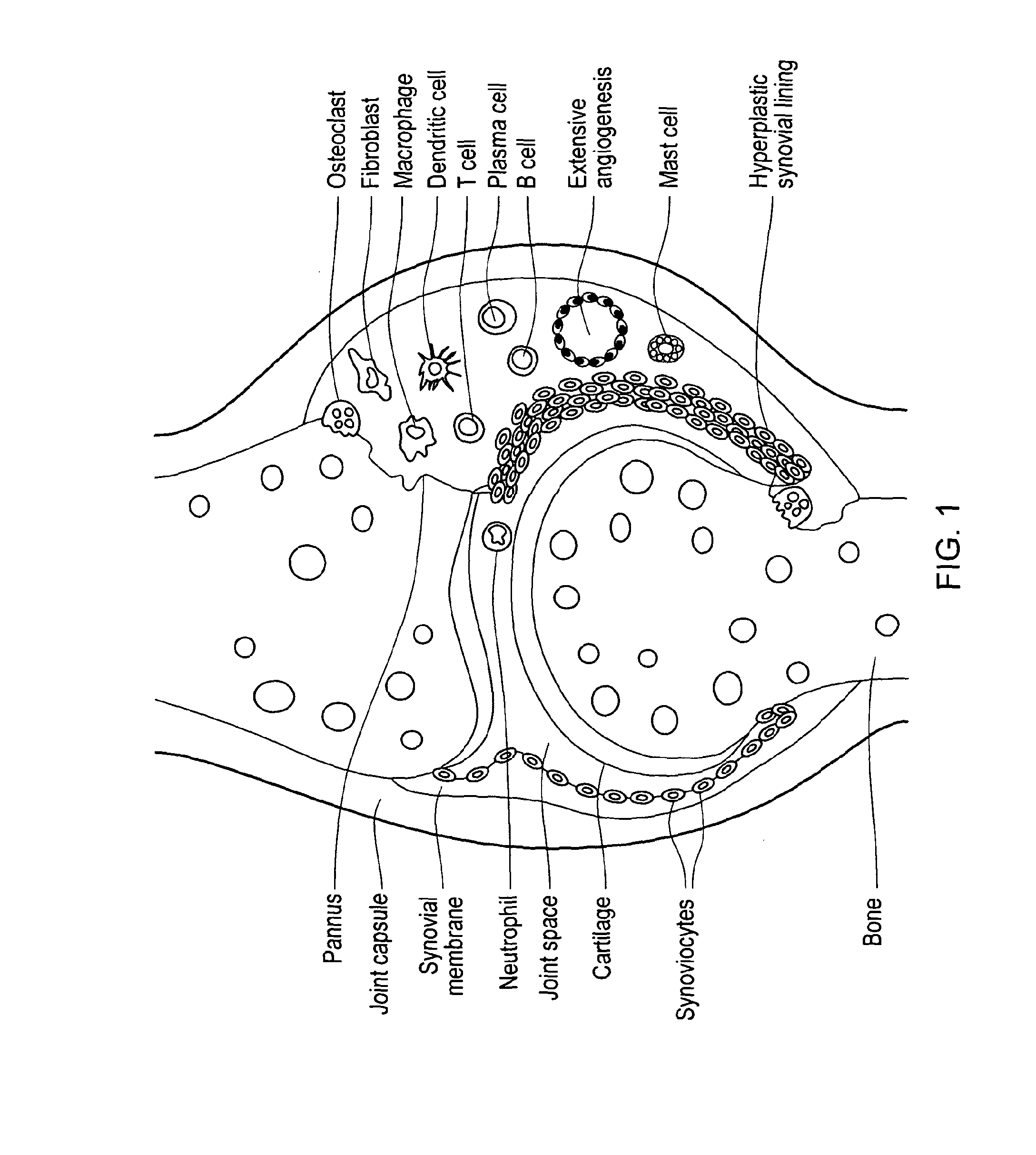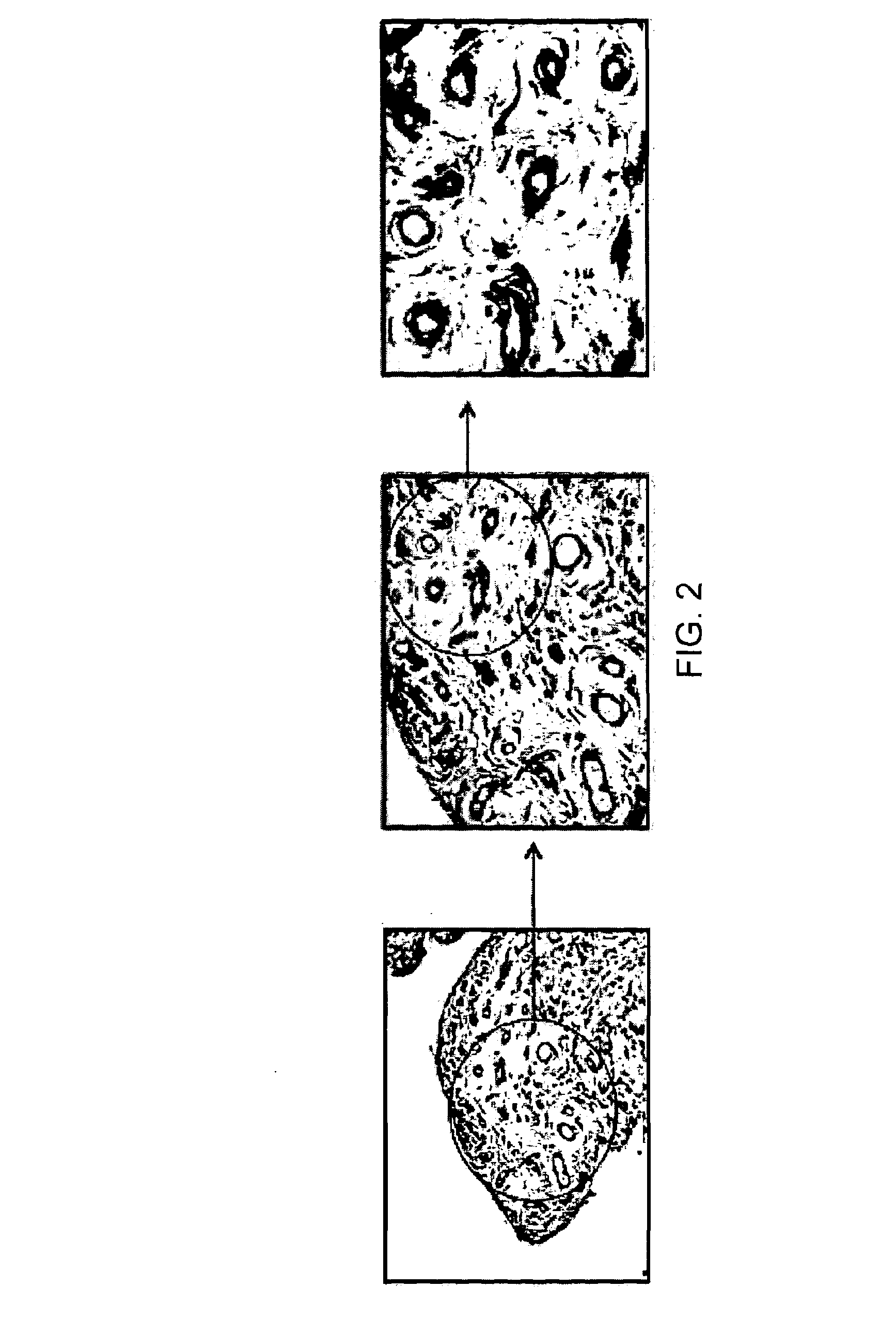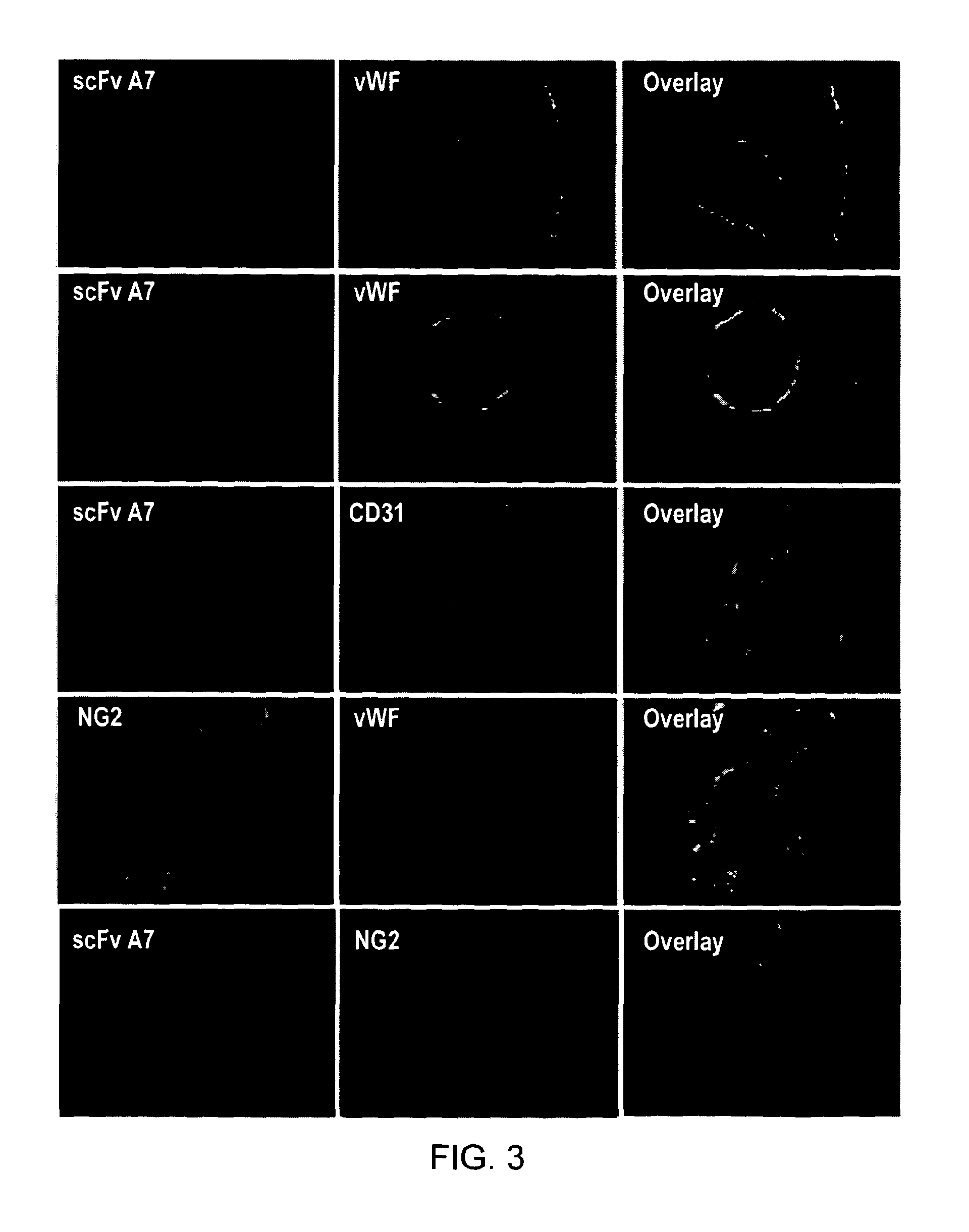Antibody specifically binding synovial microvasculature of arthritis patients
a synovial microvasculature and anti-specific technology, applied in the field of anti-specific binding polypeptides, can solve the problems of progressive cartilage destruction and bone erosion, depression, and impairment of the range of movemen
- Summary
- Abstract
- Description
- Claims
- Application Information
AI Technical Summary
Benefits of technology
Problems solved by technology
Method used
Image
Examples
example 1
In Vivo Phage Display Selection of scFv Antibody Clones
[0197]The present inventors employed a synovial xenograft model in SCID mice in an in vivo phage display screen of the Tomlinson library in order to generate scFv antibody clones with specificity to the human synovial vasculature harboured within the xenografts.
[0198]The native Tomlinson library phage was injected via the tail vein and allowed to circulate for 15 minutes. Non-specific unbound phage was removed from the circulation by cardiac perfusion of the animal with normal saline. The synovial transplant was then extracted from the animal and processed for phage recovering and titration. Skin tissue xenografts carried by the mice simultaneously, were used as control tissue for the screen. The recovered phage from the synovial graft only was then amplified in TG1 E. coli, rescued, and prepared for subsequent rounds of in vivo selection. This process of affinity selection was repeated a further three rounds in order to enrich ...
example 2
Reactivity of scFv A7 with Human Synovial Tissue
[0199]Using immunohistological analysis the present inventors have demonstrated that scFv A7 exhibits specific reactivity with the microvasculature of Osteoarthritis and Rheumatoid Arthritis synovial tissue (FIG. 2).
example 3
Identification of the Target Cell Type for scFv A7 within Synovial Microvasculature
[0200]In order to specifically determine which cell types within the microvasculature are able to react with this antibody, the present inventors performed dual staining of RA synovial tissue using scFv A7 together with the endothelial specific markers Von Willebrand Factor (vWF) and CD 31, and the pericyte specific marker NG2. The results demonstrate clearly that dual staining of this tissue with scFv A7 and the pericyte marker NG2, shows complete overlap in the pattern of cellular staining observed demonstrating that scFV A7 has reactivity with pericytes and stromal component of the microvasculature of RA synovial tissue (FIG. 3). Components of the stromal compartment of the microvasculature are attractive for antibody based targeting applications, since this compartment is stable and present in abundance.
PUM
| Property | Measurement | Unit |
|---|---|---|
| Reactivity | aaaaa | aaaaa |
| Photosensitivity | aaaaa | aaaaa |
Abstract
Description
Claims
Application Information
 Login to View More
Login to View More - R&D
- Intellectual Property
- Life Sciences
- Materials
- Tech Scout
- Unparalleled Data Quality
- Higher Quality Content
- 60% Fewer Hallucinations
Browse by: Latest US Patents, China's latest patents, Technical Efficacy Thesaurus, Application Domain, Technology Topic, Popular Technical Reports.
© 2025 PatSnap. All rights reserved.Legal|Privacy policy|Modern Slavery Act Transparency Statement|Sitemap|About US| Contact US: help@patsnap.com



